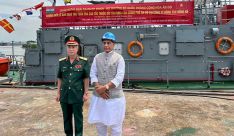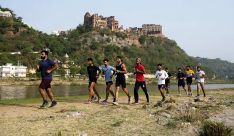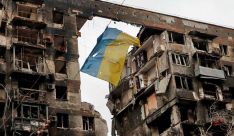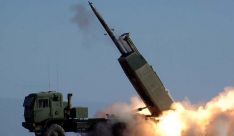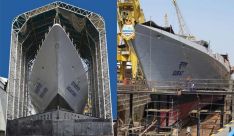Success usually has many fathers, but General Dalbir Singh has discovered that success can also generate controversies. He and the entire Army brass consider the counter-terror operations at Pathankot a success to the extent that all the terrorists were eliminated, none of the non-combatants in the Pathankot airbase or outside was harmed, and they could limit the casualties to security forces to the bare minimum.
As THE WEEK had reported the exclusive details of the operation last week in a detailed narrative account, the Army chief has now confirmed that the primary concern was to confine the terrorists to as small an area as possible so that they could not inflict any damage to the 10,000-odd Air Force personnel and their families living in the base and to the precious military assets there.
The chief had clearly directed that there should be no compromise on the safety of the officers and men who were conducting the operations. As THE WEEK had reported, he had directed that Casspir mine-protected vehicles and, where wheeled vehicles couldn't be used, tracked armoured personnel carriers be used to move the combatants within the operational area.
The controversies largely pertained to the advisability of employing the National Security Guard, and whether the Army had been put under the command of the NSG. He has since answered the questions, even hailing the employment of the NSG as a “ wise move”, and also given an exclusive interview to THE WEEK in which he has candidly explained the immediate and long-term needs of equipment, about the raising of a new strike corps on the China border, about the provisions in the 7th Pay Commission and also about women in combat. Excerpts:
There has been much confusion about the operation and the command and control in Pathankot. Can you clarify the position? Issues like whether the Army had been put under the NSG's command....
There are all kinds of reports coming out. I would like to clarify that the Army was not under anyone else's command, but under the command of the western army commander who was controlling and monitoring the situation constantly.... There were the other forces too — the NSG, the Garud commandos, the police and so on. He [the army commander] was in full control of the entire operations. We had to bear in mind that there were more than 10,000 people in the base. Our concern was to limit the operation to as small an area as possible so that none of them [the terrorists] escaped, and we could avoid casualty. The first day itself the operational area was sanitised. No single casualty was there after that.
There were reports in some sections of the media that only two columns of the Army were employed. There were not two, but eight columns—each about 70 troops. In addition were the para and special forces. The Army brigade commander was commanding the ground troops.
The controversy has been about deployment of NSG.
There could have been a hostage situation. The NSG is trained to tackle hostage situations. Rather than wait for it to happen [and then send the NSG] it was a wise move to deploy them [early].
What is the status of the much-talked about integration of the services? What is the Army's view on the proposal to have a chief of defence staff [CDS]? How close are we to a decision on the matter?
The appointment of a CDS or a permanent chairman of the chiefs of staff committee, though long overdue, is for the government to decide. Jointness and interoperability will be the key to success in any future war and the appointment of a CDS will provide a single-point professional military advice to the government. It is an operational imperative to synergise and optimise the capabilities of the three services in various operational contingencies, across the spectrum of conflict. The need for a CDS will further grow as we form new joint structures in future. Our views on this have been communicated to the government. At this stage it would not be in order for me to comment any further. However, in the meantime, we have a well-organised system of joint planning, training and operations in place to meet the security challenges.
The biggest revolutionary step in terms of tactical posturing that we have undertaken in the recent years has been to raise a new strike corps on the northern border. Is the strike corps fully in place? How prepared are we regarding the vigil on the northern border with China?
In consonance with our perspective planning with reference to capability development along northern borders, the Cabinet Committee on Security in July 2013 had sanctioned accretions for the Army which include the mountain strike corps. As far as operationalisation of the force is concerned, I can assure you that it is progressing as per schedule.... The sanctioned raisings will be completed in the desired time frame.
Immediate equipping and arming of these forces has been done from the existing stocks held with the Army and indents have been initiated to make up these depleted stocks. The government is committed to recuperate these stocks at the earliest. Resolute steps are being initiated to ensure that there is no depletion of stocks, and necessary financial support is provided for the sustenance, new raisings as well as modernisation plans of the Army.
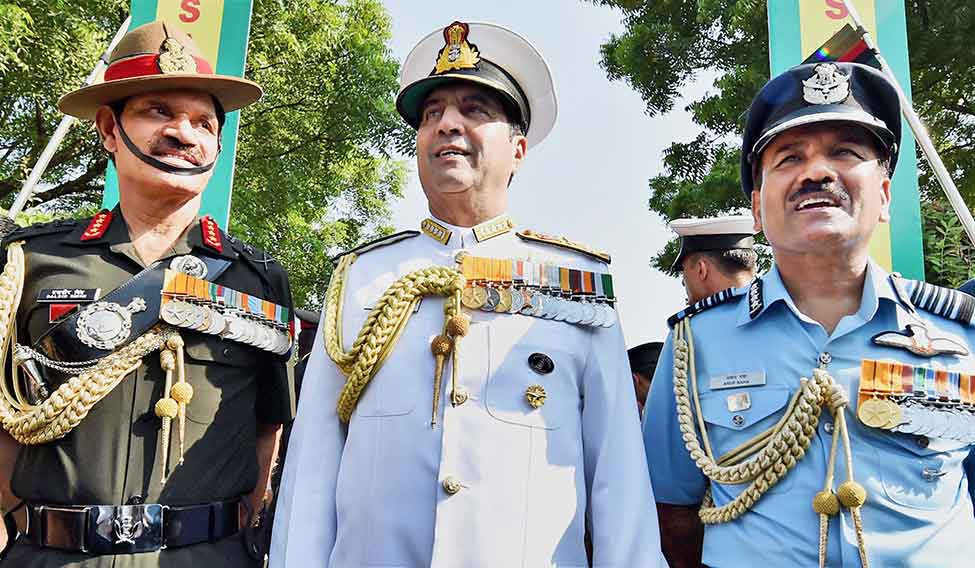 Uniforms united: (From left) Gen. Dalbir Singh, Navy chief Robin K. Dhowan and Air Force chief Arup Raha | PTI
Uniforms united: (From left) Gen. Dalbir Singh, Navy chief Robin K. Dhowan and Air Force chief Arup Raha | PTI
How about the western theatre? Constant firing on the Line of Control with Pakistan had been an irritant all these years. Now with the political leadership's reach-out to our western neighbour, do you foresee a more stable situation on the Line of Control?
We remain committed to peace on borders and remain dedicated to building confidence through established means like hotlines, flag meetings as well as weekly talks between DGMOs [directors-general military operations]. However, when there are compelling circumstances, troops are forced to carry out appropriate response.
My assessment is that in the light of recent peace initiatives by the two governments, there may be a thaw along the Line of Control. However, it is premature to expect transformational outcomes. We will need to maintain guard and monitor the situation as it develops.
In terms of critical equipment, what are your immediate needs? The artillery modernisation has been pending for several years. The delay in procurement of critical systems has been a major problem all these years.
The artillery is undertaking a major modernisation drive for induction of guns. The focus remains on 'mediumisation' with induction of a family of 155mm guns of different versions to meet our current and long-term needs. These include tracked self-propelled versions, wheeled self-propelled versions, and towed versions. The procurement process of tracked self-propelled version is already in CNC [commercial negotiation committee] stage....
We have identified 26 priority procurement proposals which are being pursued on fast track. Broadly, these projects include modernisation of the infantry, artillery, AAD [anti-aircraft defence] and mechanised forces; night enablement of the Army and replacement of the aviation assets.
The present government is endeavouring to have 'Make in India' in a big way in defence production, too. A few years ago we had set a target of 70 per cent indigenous sourcing of military equipment, but we are nowhere near the target. So how optimistic are you about 'Make in India' being able to meet the your critical high-technology requirements?
Most areas of modernisation are being benefited by the 'Make in India' initiative with a wide range of equipment being proposed to be manufactured in the country. A large number of foreign original equipment manufacturers [OEMs] of defence equipment have offered to form joint ventures with Indian companies to manufacture defence equipment in the country. These items range from specialist guns, night sights and helicopters to even missiles. Formation of these joint ventures will help bring in cutting edge technology through transfer of technology to the country. The same would also help research & design agencies.
Army HQ has also put in place an institutionalised mechanism for regular engagement with the indigenous industry so as to share with them our current and long-term requirements …. This will enable them to commit and prioritise appropriate R&D efforts in time. The response from the indigenous industry has been encouraging.
The last five years show a significant emphasis on indigenisation with maximum acquisitions having been accorded in the 'buy-Indian' and the 'buy & make-Indian' category. In fact, 73 per cent of the contracts in the recent past have been signed with Indian companies. In terms of value, 55 per cent of the Army's modernisation budget has been spent on the indigenous industry. In the last two years 'buy Indian', 'buy & make Indian' and ‘ make Indian' schemes have risen from 73 per cent to 87 per cent of the total capital procurement schemes.
There was a time when there were few takers among the educated middle class for a career in the military. Do you think the situation has changed? What are your expectations from the Pay Commission?
I definitely see the situation to have changed. The Army is becoming an attractive career. The recommendations of 7th Pay Commission towards short service commission, once approved by the government, would make it more attractive.
The 7th CPC had submitted the report to the government on November 19. There are a few recommendations like grant of training allowance, simplification in procedure for claiming allowances, grant of extra work allowance, removal of conditionality of authorised married establishment [AME] for claiming HRA, etc, which are undoubtedly beneficial, particularly for the junior commissioned officers and other ranks. The overall pay hike recommended is in the range of 15 per cent to 17 per cent.
However, there are a few recommendations which are not considered satisfactory by the services and have been taken up with the raksha mantri. Foremost is the non-resolution of core anomalies of the 6th CPC, which has further accentuated the disparity created during the 6th CPC. Besides this, faulty pay matrix for defence forces leading to salary stagnation in many ranks, disparity in risk and hardship allowances and non-conducive formula for calculation of pensions are a few other concerns. We are sanguine that their concerns shall be positively addressed by the government.
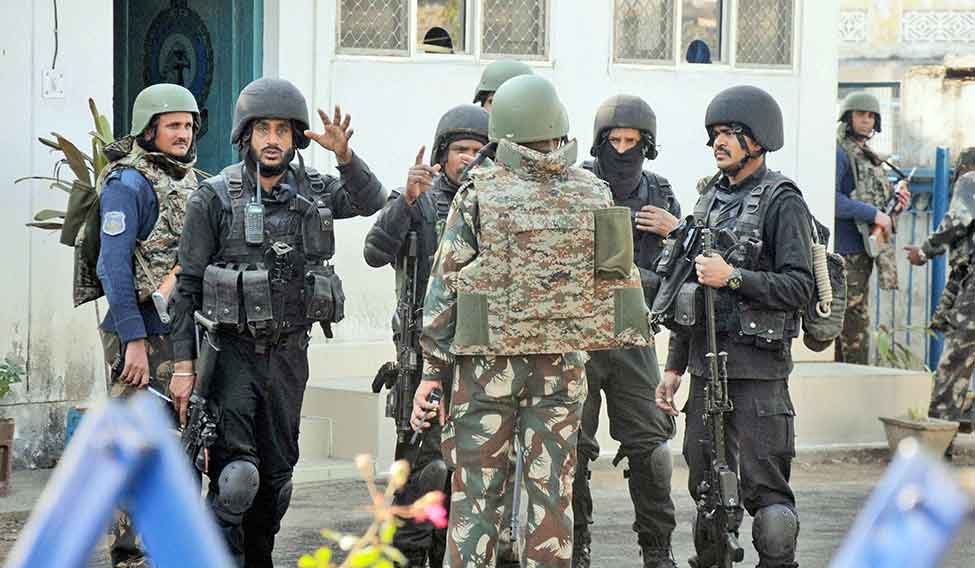 Troubleshooters: NSG commandos inside the Air Force camp in Pathankot | PTI
Troubleshooters: NSG commandos inside the Air Force camp in Pathankot | PTI
What is the Army doing to improve its tooth-to-tail ratio as has been asked by the government?
I must tell you, this aspect, increasing tooth-to-tail ratio, has been our objective for nearly two decades. We have made significant achievements by enhancing our operational capabilities in multiple domains by optimising on existing manpower; dual tasking; and outsourcing initiatives wherever feasible. A quick back-of-envelope calculation would indicate that while there have been induction of many military platforms, weapons, equipment and systems, most of these have been absorbed without corresponding manpower accretions.
One must, however, appreciate that the necessity of 'boots on ground' in our security context limits our options for any further major reduction of manpower.
The IAF has opened its combat wings for women. When will the Army see lady combatants fighting in counter-insurgency and counter-terrorism operations?
The Army believes in providing equal opportunities to all officers irrespective of their gender. However, enhancing scope of employment of women officers will have to be a phased and regulated process. At present permanent commission is being granted to women officers in AMC [Army Medical Corps] and MNS [Military Nursing Service] and the same has also been extended to AEC [Army Engineering Corps] and JAG [Judge Advocate-General]. As a next step, we are looking to grant permanent commission to women officers in eight other technical services and combat support arms with modified terms and conditions of service. A proposal to this effect is already under consideration of the government.
Induction of women officers in combat arms may be considered a subsequent step based on experiences gained during their absorption in combat support arms, operational requirements, state of infrastructure in forward areas and prevailing operational conditions along disputed borders and volatile insurgency-prone areas.








